The creamy sweet texture of this Burnt Basque Cheesecake recipe makes it a unique and wonderful dessert. This crustless cheesecake originates from the Basque region of Spain and has a smooth and delicious taste!
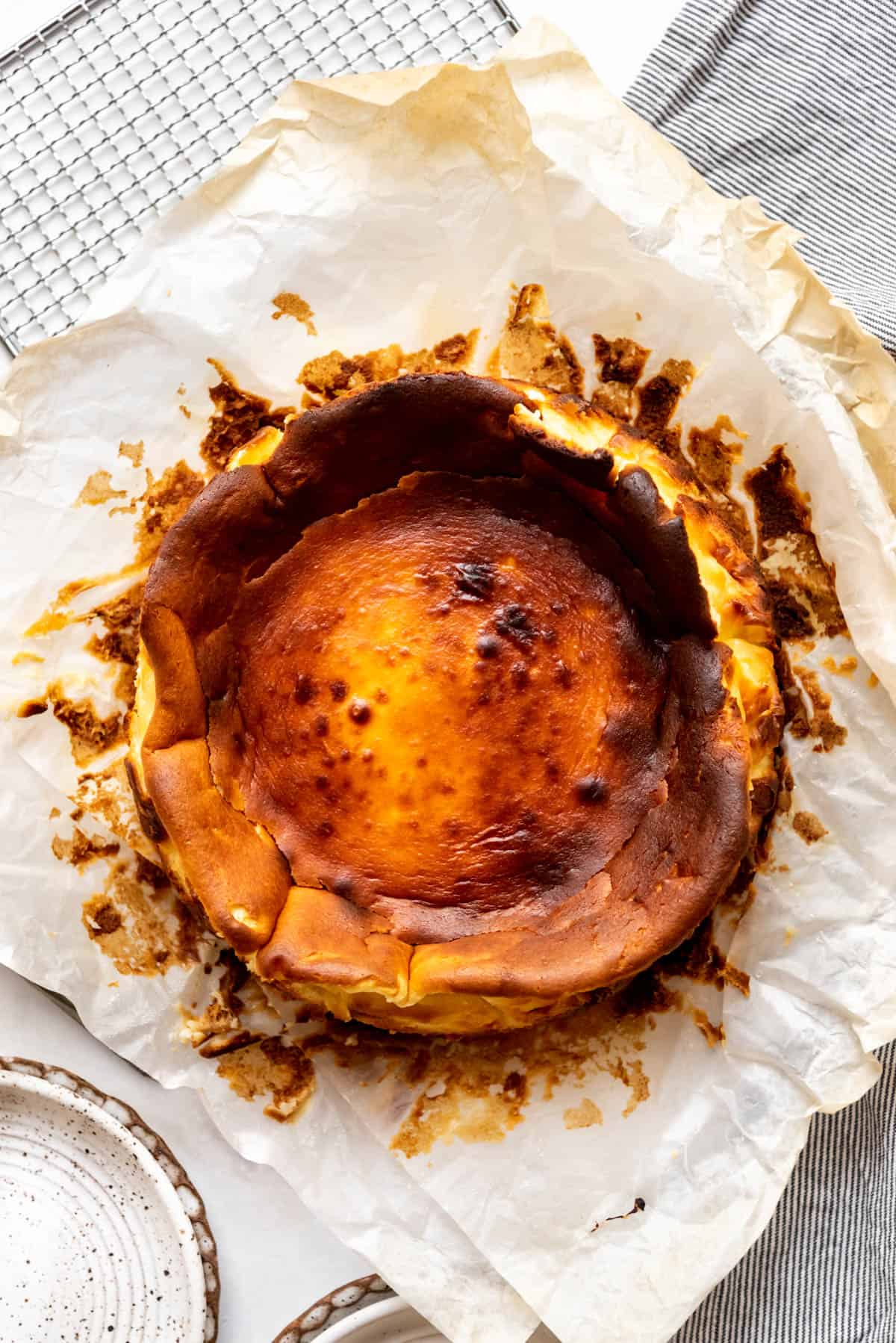
Table of Contents
I had a hard time finding recipes to represent the state of Nevada as part of my American Eats series until I learned that there is a large Basque population of people who descend from immigrants from the Basque region of Spain. They originally came in the mid-1800’s for mining and you can find Basque restaurants in various towns across Nevada today.
This particular Basque dessert isn’t one that the original Basque immigrants would have brought with them, but it has gained huge popularity and become a worldwide sensation.
What is Basque cheesecake?
Basque cheesecake, also known as “burnt cheesecake,” is a unique style of cheesecake that originates from the Basque region of Spain. Unlike traditional cheesecakes, Basque cheesecake has a caramelized and burnt exterior with a creamy and custard-like center.
Basque cheesecake, as its name suggests, has its origins in the Basque region of Spain, where it is known for its cracked and burnt exterior. The intentional caramelization on the top creates a rustic and imperfect appearance, which adds to its charm.
And guys, this is one AMAZING cheesecake. I’m obsessed. If you like desserts with a balance of bitter and sweet (think creme brulee with it’s burnt sugar on top), then you are going to love this Basque cheesecake recipe.
The crustless cheesecake is made with a few basic ingredients that are pretty standard to most any cheesecake recipe: cream cheese, sugar, eggs, heavy cream, and flour. The mixture is typically blended until smooth and then baked at a high temperature, which results in a caramelized top. The interior remains soft, rich, and almost pudding-like (unless you prefer to bake it slightly longer, which I do), with a slightly burnt flavor.
What does Basque cheesecake taste like?
Basque cheesecake has a unique flavor profile that sets it apart from traditional cheesecakes. The top of the cheesecake is intentionally caramelized and slightly burnt due to the high baking temperature. This results in a rich, deep flavor with hints of caramelization, giving it a unique taste compared to regular cheesecakes.
When it comes to the interior of a Basque cheesecake, it is typically creamy and custard-like. It is soft, smooth, and often described as velvety.
The combination of cream cheese, eggs, and heavy cream creates a luscious consistency that melts in your mouth. And my Basque cheesecake recipe isn’t heavy on the sugar so this is a moderately sweet dessert that compliments the other flavors without being overly sweet.
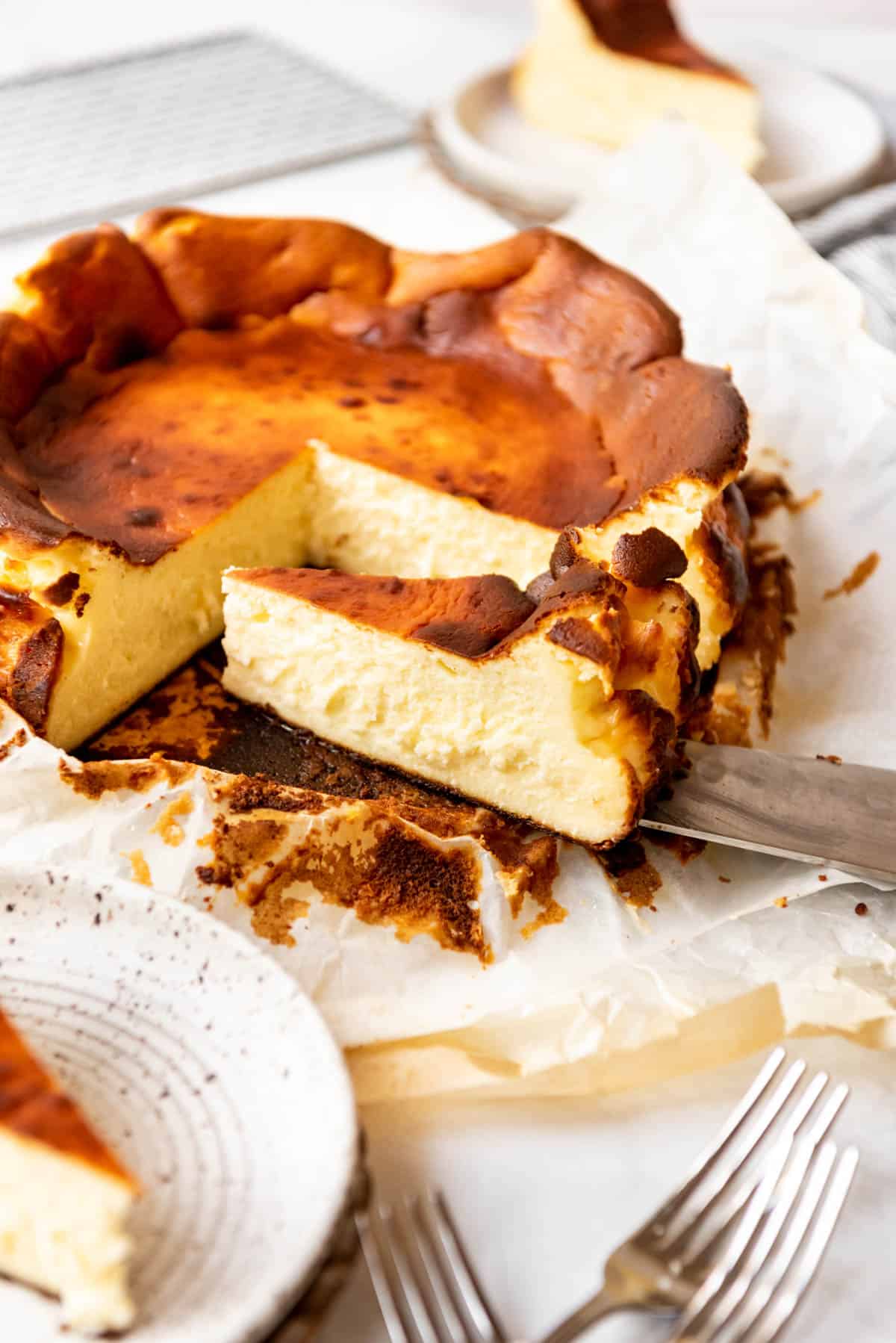
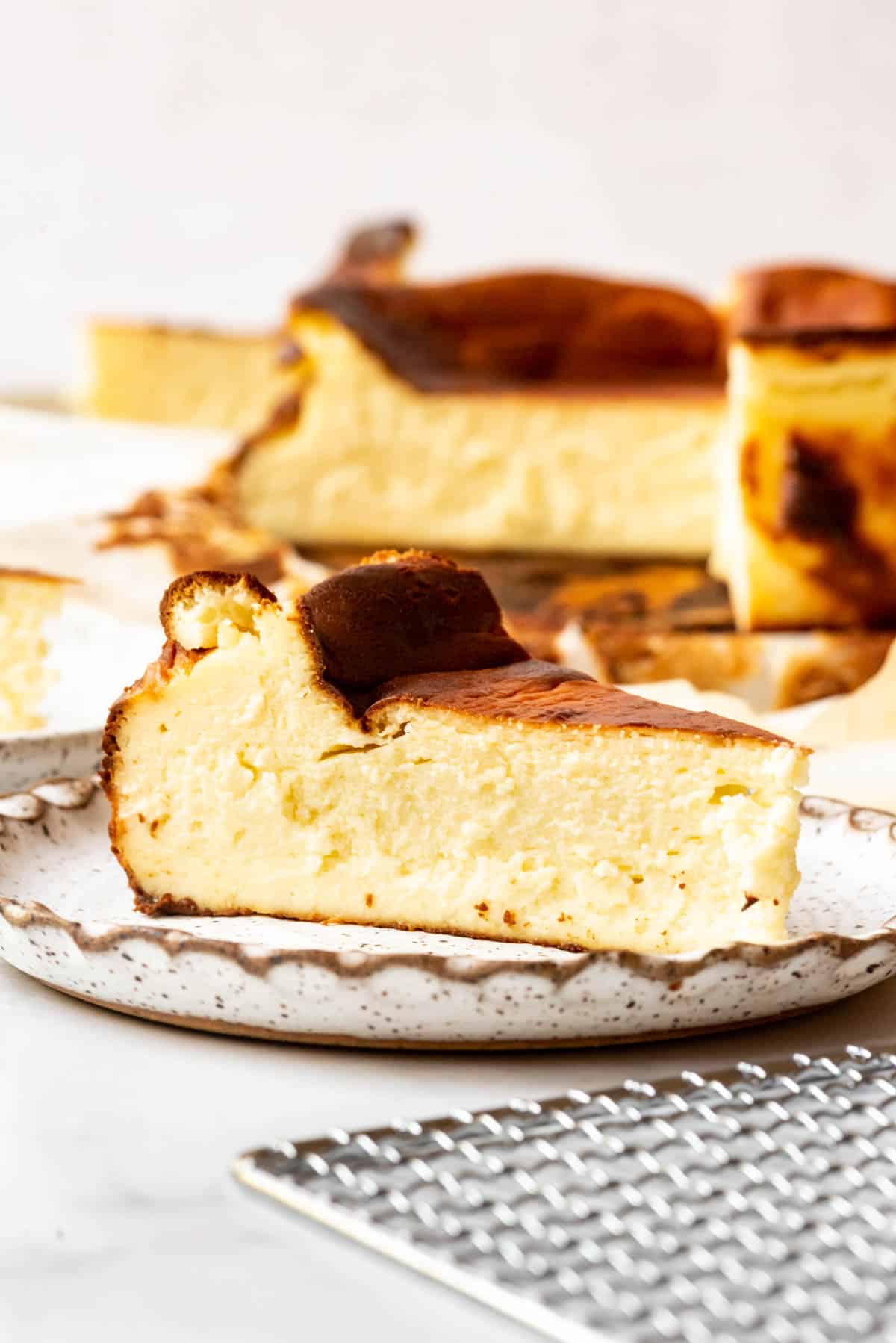
Basque Cheesecake Ingredients
Scroll down to the recipe card below this post for ingredient quantities and full instructions.
- Cream cheese – I strongly recommend only using full-fat cream cheese for best results.
- Eggs – Fresh large eggs are important to the texture and flavor of your cheesecake.
- Granulated sugar – After recipe testing we felt like this amount of sugar was just right so the cheesecake is sweet enough and caramelizes well without being too sweet.
- Heavy cream – This helps get the texture just right and adds richness and a sweet cream flavor that balances the tang of the cream cheese.
- All-purpose flour – This provides just enough stabilization to the cheesecake for a little structure.
- Vanilla extract – Adds sweetness and complexity to the dessert without being overpowering.
- Salt – Balances everything and makes it all taste better.
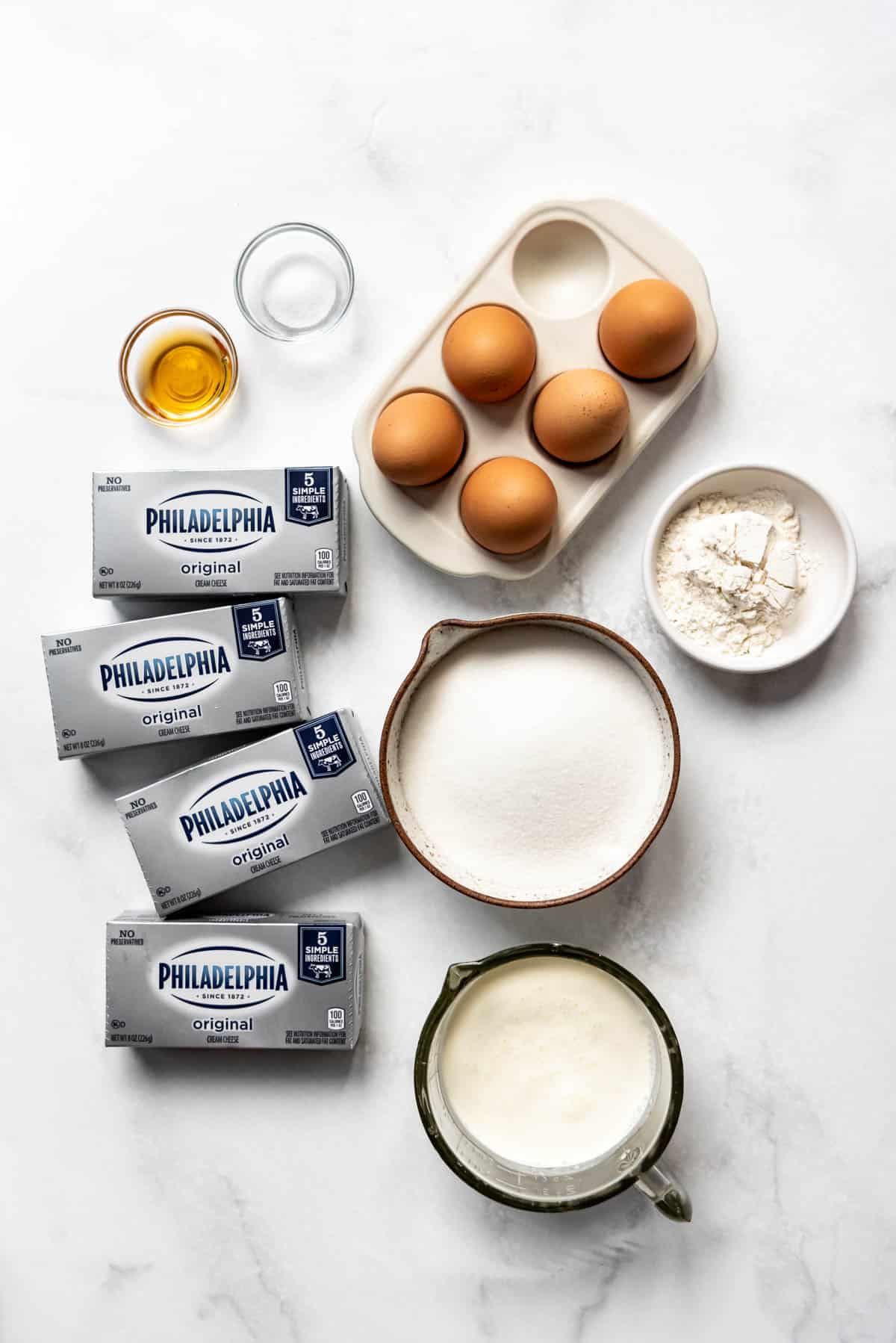
How to Make Basque Cheesecake
- Preheat the oven. Preheat your oven to 425°F. It can take a good 20 minutes for many ovens to reach this high temperature that is necessary for a proper Basque cheesecake.
- Mix ingredients. Combine the cream cheese, sugar, flour, vanilla, and salt in a large mixing bowl and beat well with an electric mixer until creamy and smooth.
- Add eggs and cream. Mix well, stopping to scrape down the sides of the bowl to ensure everything gets evenly mixed together. We aren’t as worried about overmixing the eggs as we are with other cheesecake recipes because it doesn’t matter as much if your cheesecake cracks this time around.
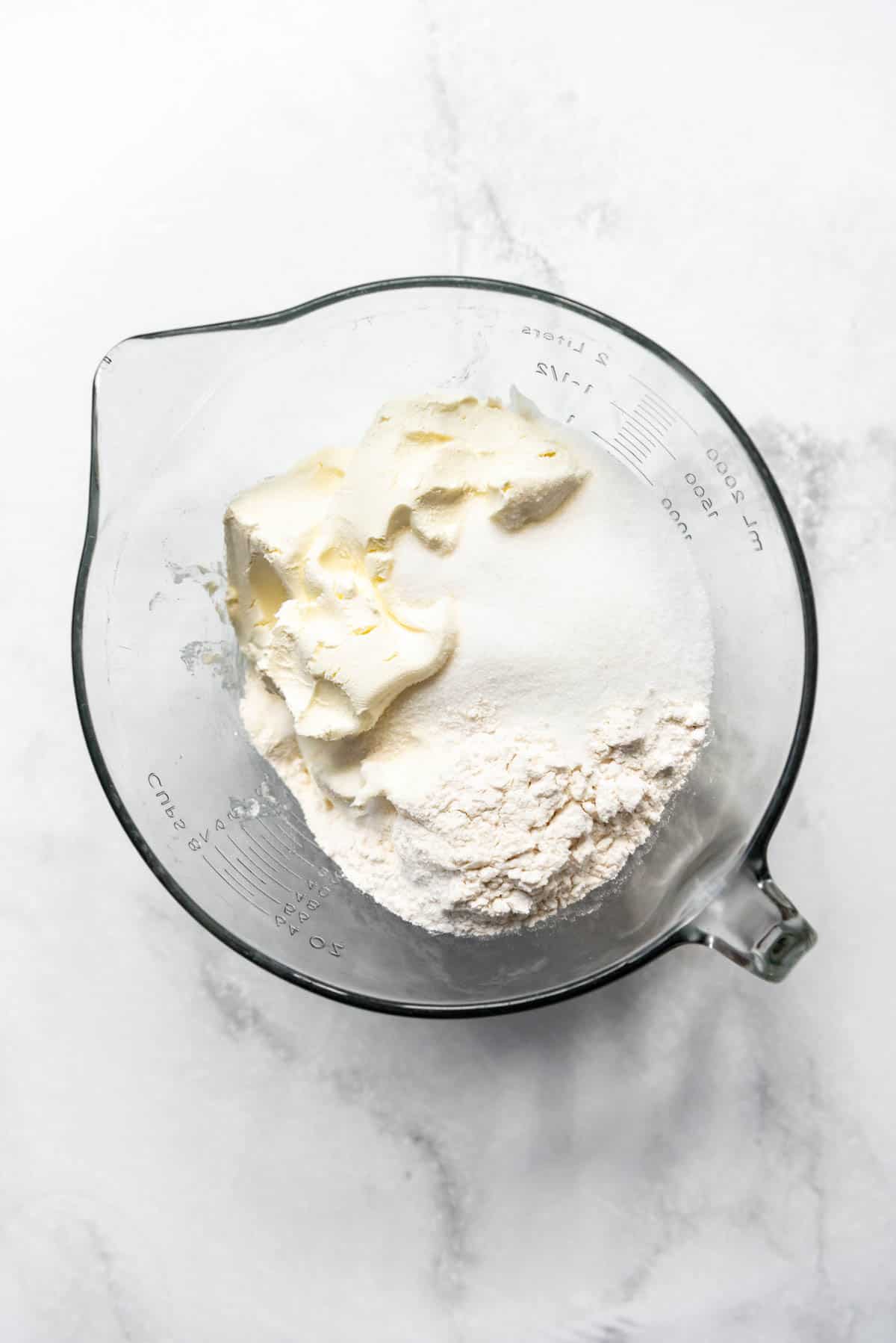
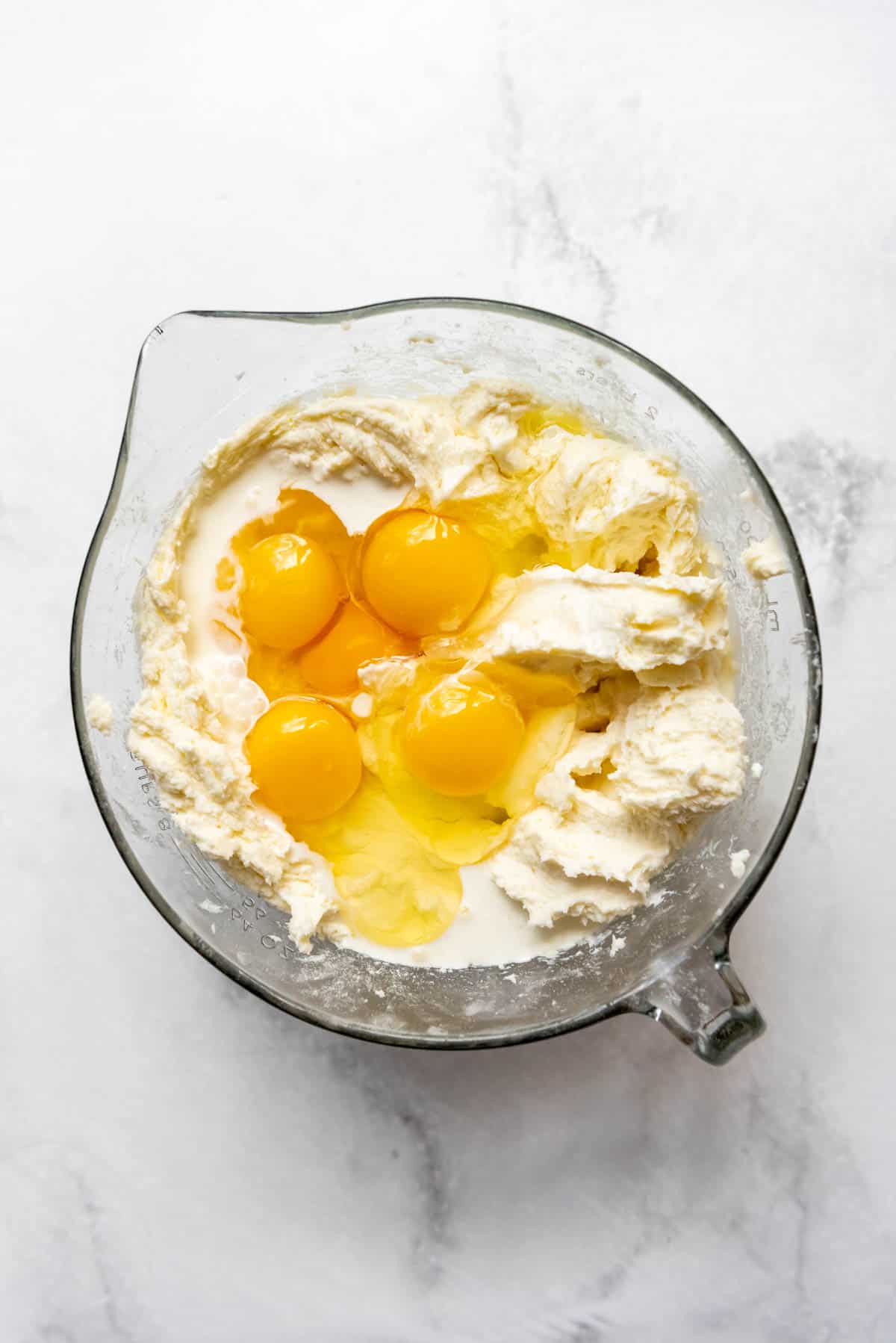
- Line the pan. Butter a 9-inch round cake pan or springform pan and line the bottom with two sheets of crinkled parchment paper. These will prevent the cheesecake from sticking to the pan and enable you to remove it easily from the pan once the cheesecake has cooled completely.
- Bake. Pour the batter into the prepared pan, tapping the pan on the countertop a few times to remove any air bubbles. Bake in the preheated oven for about 55-60 minutes, or until the top is dark golden brown and the center is slightly jiggly.
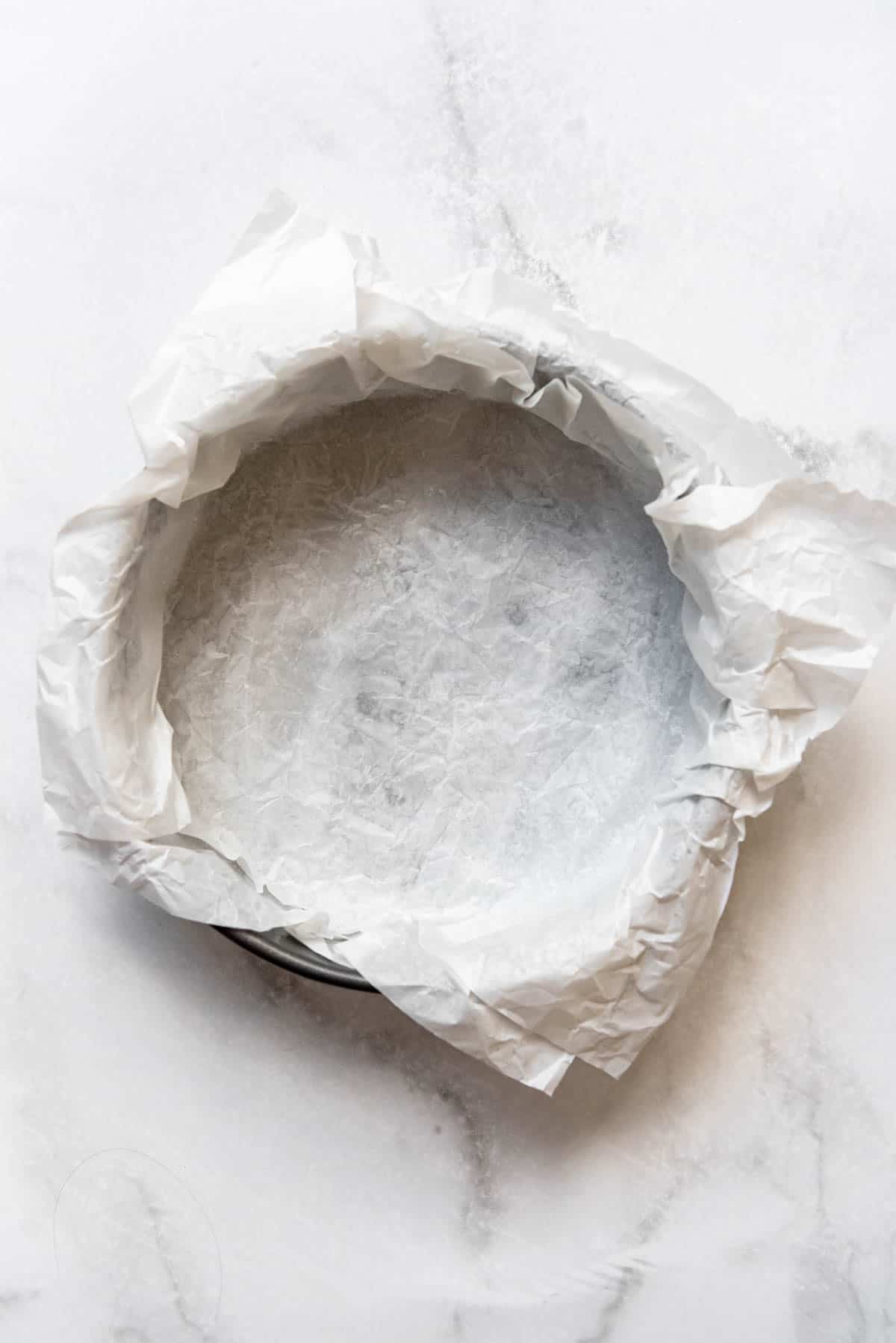
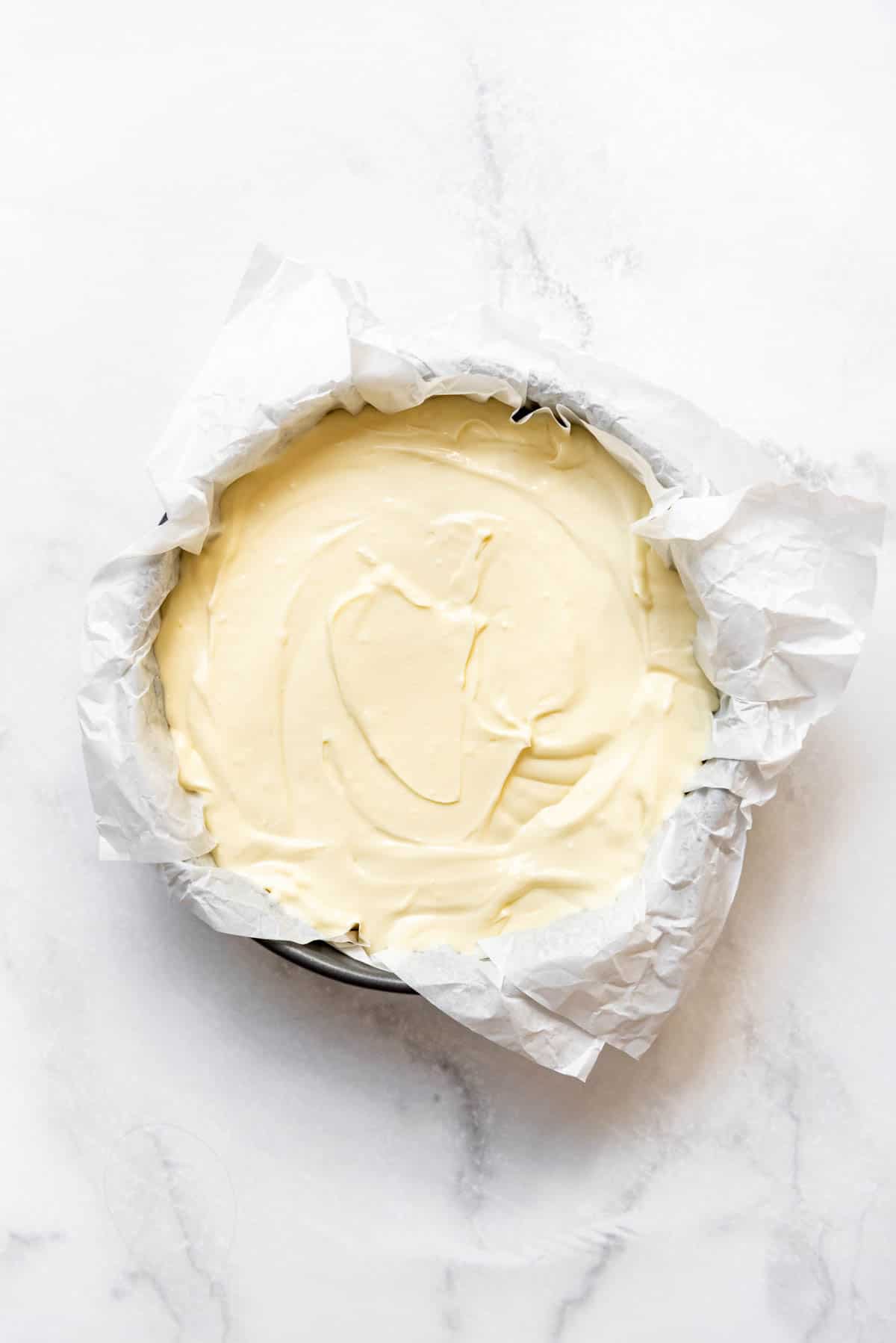
- Cool. Remove the cheesecake from the oven and let it cool completely at room temperature.
- Chill. Once completely cooled, refrigerate the Basque cheesecake for at least 4 hours, or preferably overnight. Chilling it allows the flavors to develop and the texture to set.
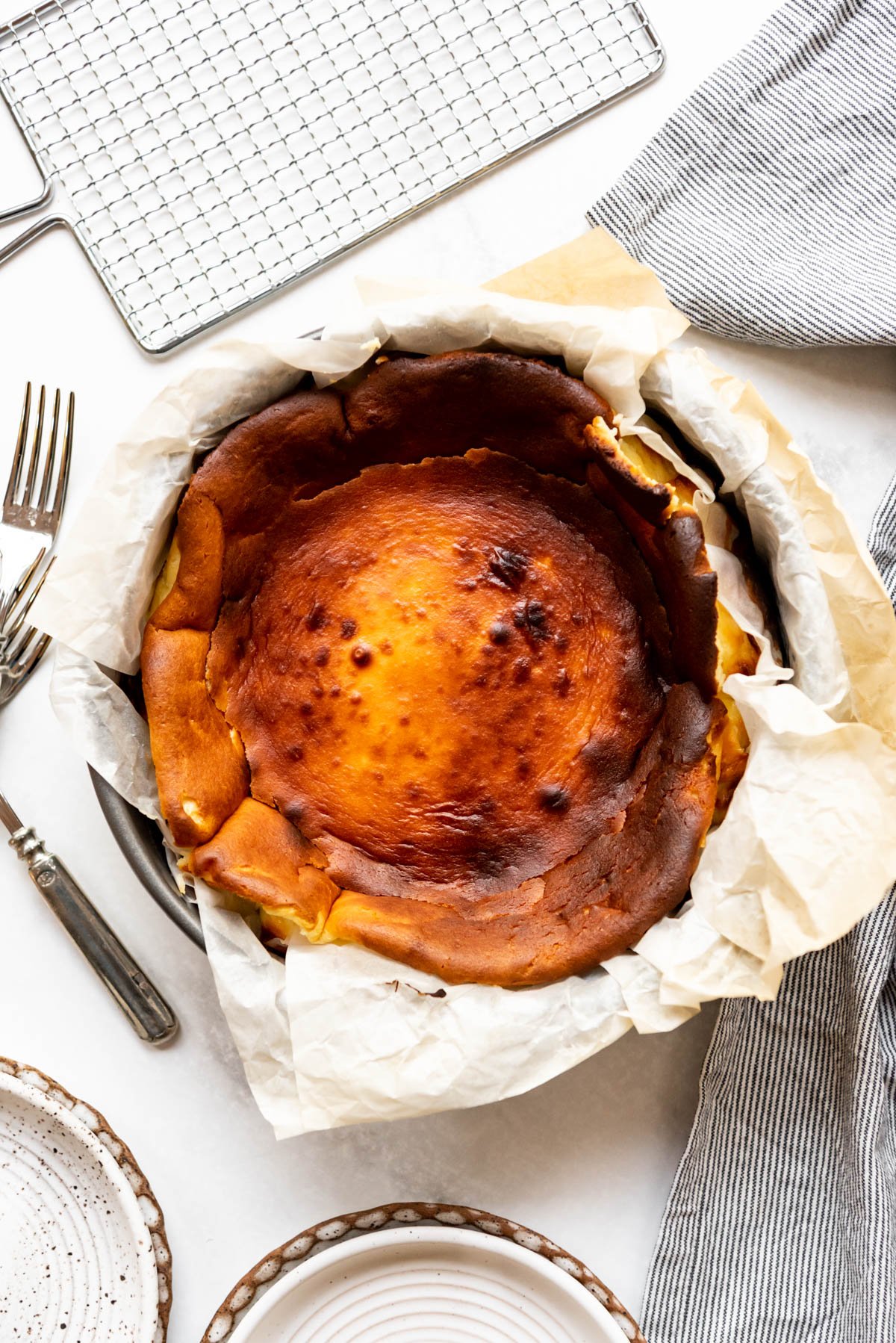
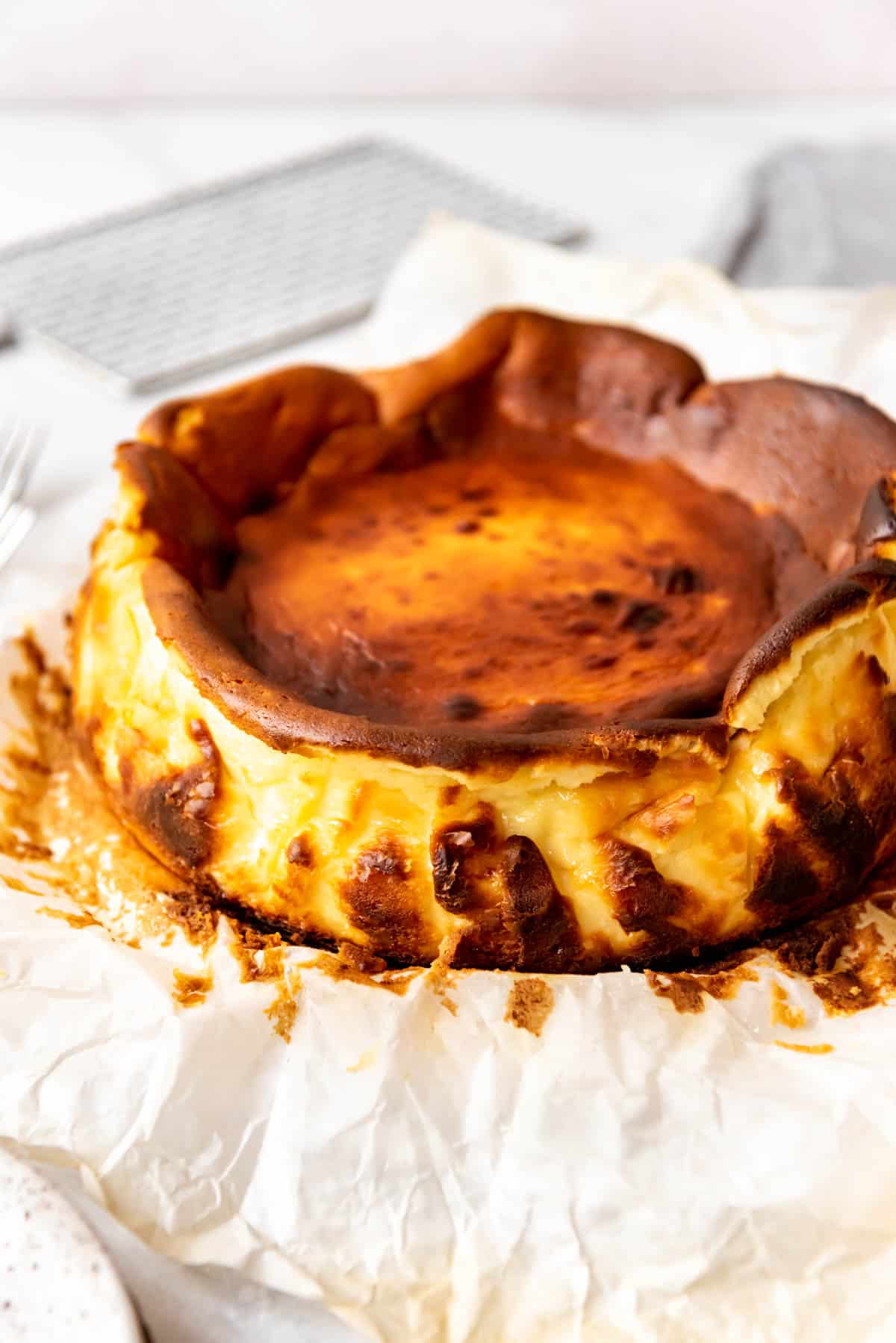
- Serve. Serve the Basque cheesecake chilled or at room temperature. It is often enjoyed as is, without any additional toppings, to appreciate its unique flavors and appearance.

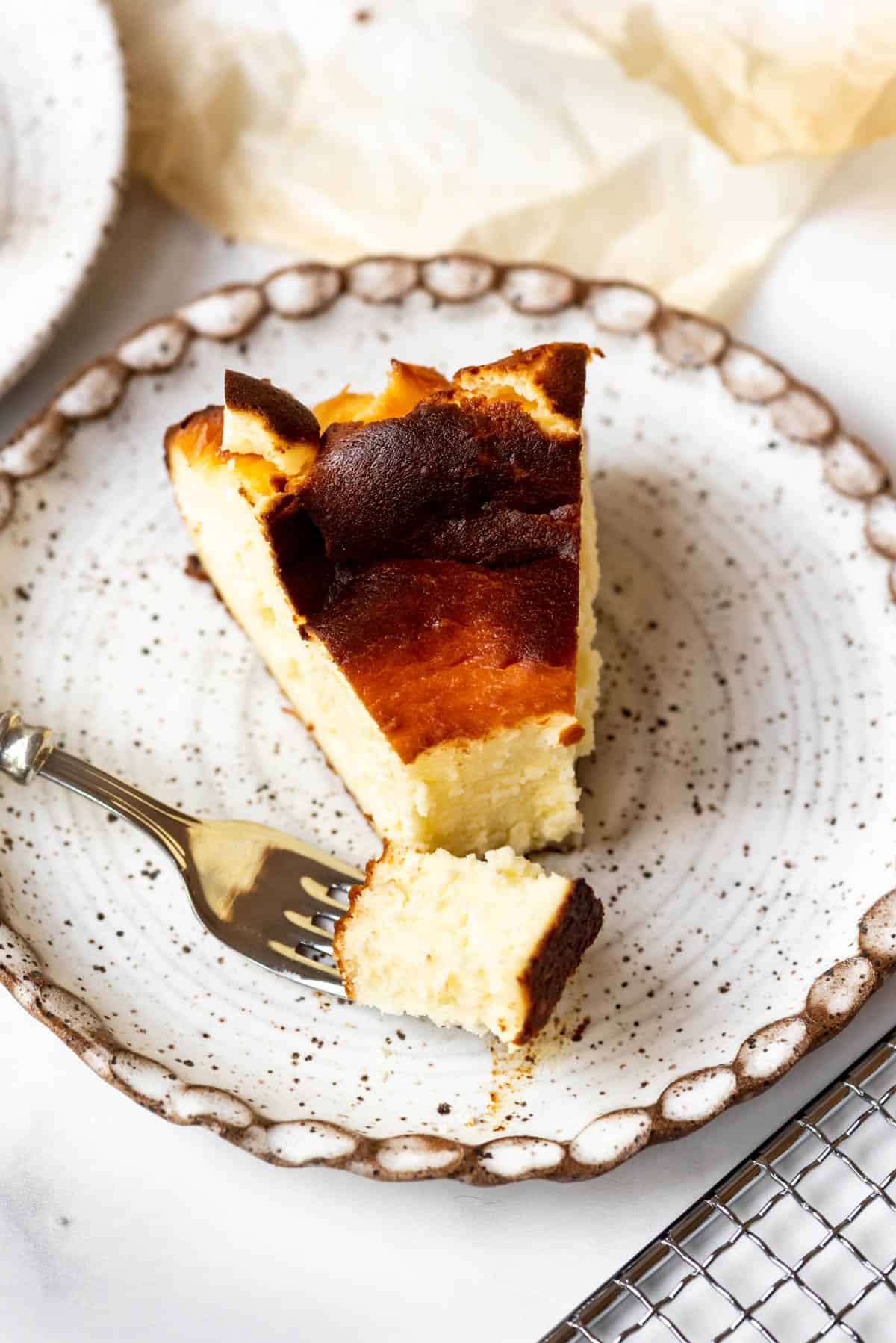
Recipe FAQ’s
We like serving Basque cheesecake with nothing more than a few fresh berries, similar to how we enjoy creme brulee. But you could serve it with your favorite dessert sauce like a raspberry coulis or some homemade whipped cream.
Basque cheesecake is closely associated with the Basque Country, an autonomous community located in the northern part of Spain. The Basque Country has a distinct cultural identity, including its own language (Basque or Euskara) and culinary traditions. Basque cuisine is renowned for its unique flavors and dishes, and Basque cheesecake is one of the culinary delights that originated in this region.
The specific origins of Basque cheesecake are often attributed to a restaurant called La Viña, located in San Sebastián, a city in the Basque Country of Spain. La Viña is credited with popularizing this style of cheesecake and showcasing it as a signature dessert.
Over time, Basque cheesecake has gained widespread recognition and popularity beyond the Basque Country and Spain. It has become a sought-after dessert in various parts of the world, appreciated for its distinct flavor, texture, and rustic appearance.
While Basque cheesecake is associated with Spain due to its origin in the Basque Country, it has become a global sensation enjoyed by people of different cultural backgrounds. Its fame has transcended borders, and it is now cherished as a delicious dessert internationally.
Yes, this is one recipe where it should most definitely look burnt at the end, so it’s super forgiving even if you have struggled with cheesecakes in the past! There is no water bath or anything technical and you still get amazing results!
One of the defining characteristics of Basque cheesecake is its intentionally imperfect appearance. The cracked and darkened surface is part of its rustic charm. It is often served at room temperature or chilled, and its texture can vary from slightly jiggly to more set, depending on personal preference.
What is the difference between Basque cheesecake and regular cheesecake?
Traditional cheesecake typically consists of cream cheese, sugar, eggs, and a crust made from graham crackers or cookie crumbs. Additional ingredients like sour cream, vanilla extract, and lemon juice are often included for flavor.
Regular cheesecake is known for its dense and velvety texture. It is often baked at a lower temperature for a longer time, resulting in a more set and firm consistency. Basque cheesecake, on the other hand, has a custard-like and creamy interior with a slightly jiggly texture. It is frequently intentionally underbaked to achieve this soft consistency, although you can bake it longer if you prefer it more well done.
Also, regular cheesecake is typically baked in a water bath at a lower temperature to prevent cracking and ensure even cooking. Basque cheesecake, however, is baked at a higher temperature, usually around 425-450°F, which causes the top to caramelize and develop a burnt appearance. The high heat contributes to the unique texture and flavor of Basque cheesecake.
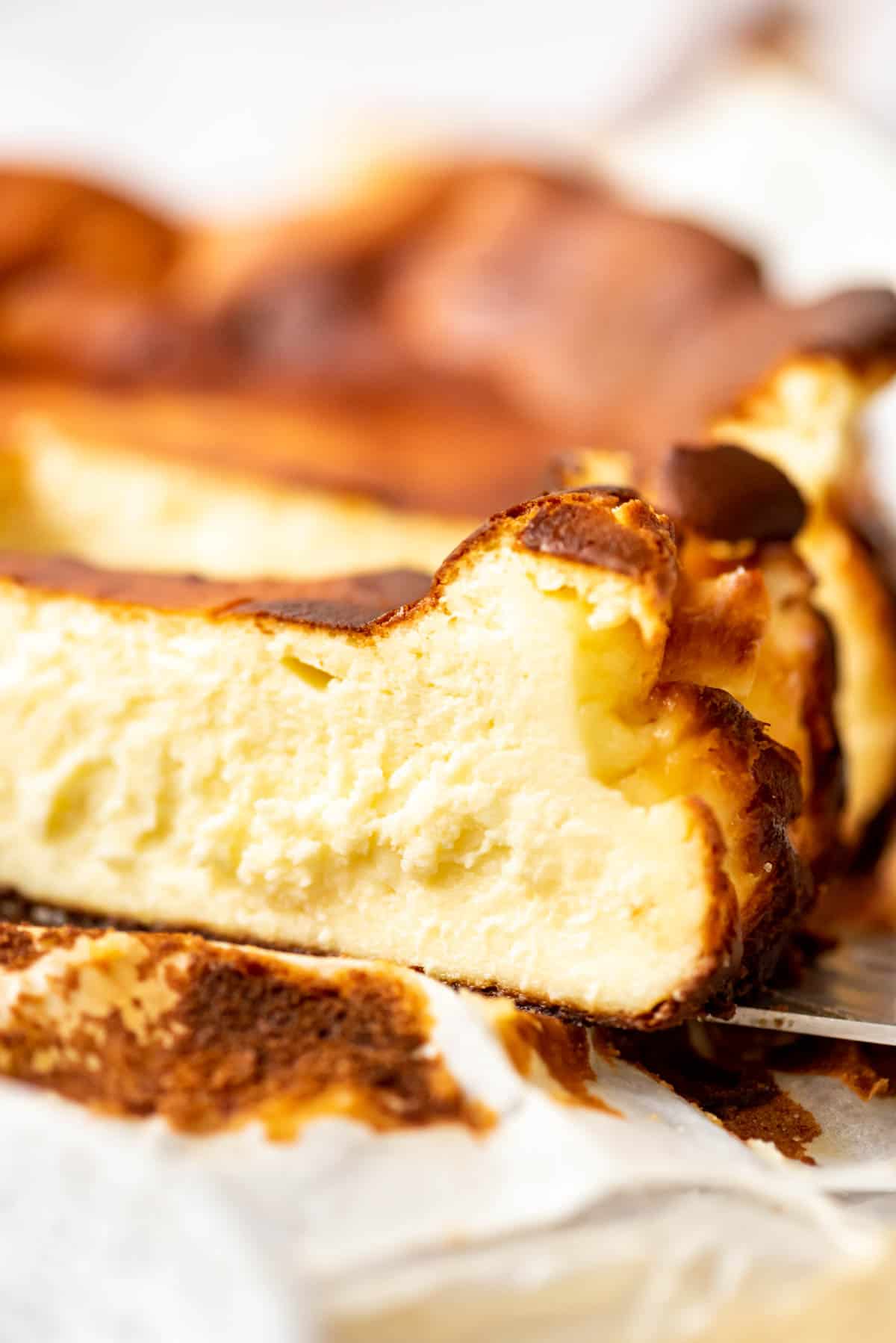
Tips for Success
- Use room temperature ingredients. Make sure your cream cheese, eggs, and heavy cream are at room temperature before beginning. This allows for easier mixing and ensures a smoother batter so you don’t end up with lumps of unmixed cream cheese.
- Line the pan with parchment paper. To ensure easy removal of the cheesecake from the pan and prevent sticking, line the bottom of the cake pan with parchment paper. This will help you lift the cheesecake out of the pan once it has cooled, and it should peel right off so you can slice it.
- Use a high baking temperature. Basque cheesecake is baked at a higher temperature, typically around 425-450°F. This high heat contributes to the caramelization and burnt top characteristic of Basque cheesecake. It’s important to preheat the oven well and maintain the temperature throughout baking.
- Embrace imperfections. Basque cheesecake is known for its cracked and rustic appearance. Embrace the cracks and caramelized top as part of its charm. Don’t worry about achieving a perfectly smooth surface—it’s the imperfections that make it unique.
Storage & Freezing
Once your cheesecake has cooled completely it should be stored in the refrigerator for up to 5 days. It can be served chilled or you can let it sit out for an hour or two to serve at room temperature, however I don’t recommend serving any type of cheesecake warm.
Basque cheesecake can also be frozen for up to 3 months. Wrap it tightly in plastic wrap before freezing to protect it from freezer burn. Let it thaw overnight in the fridge and sit out on the counter for about 1 hour before serving.

More Cheesecake Recipes
- Best Cheesecake Recipe (No Water Bath!)
- Cinnamon Roll Cheesecake
- Cheesecake Jars
- Pumpkin Cheesecake
- No-Bake Cheesecake
Did you make this recipe?
Let me know what you thought with a comment and rating below. You can also take a picture and tag me on Instagram @houseofnasheats or share it on the Pinterest pin so I can see.
Basque Cheesecake
Ingredients
- 4 (8-ounce) packages cream cheese softened (full-fat recommended)
- 1 1/2 cups granulated sugar
- 1/4 cup all-purpose flour
- 1/2 teaspoon salt
- 1 teaspoon vanilla extract
- 5 large eggs room temperature
- 1 1/4 cups heavy cream

Instructions
- Preheat oven to 425°F. Line a 9-inch springform pan with two sheets of crinkled parchment paper for easy removal.
- In a large mixing bowl, beat cream cheese and sugar with an electric mixer on medium speed until combined and smooth. Add flour, vanilla, and salt. Mix again, stopping to scrape the bottom and sides of the bowl.4 (8-ounce) packages cream cheese, 1 ½ cups granulated sugar, ¼ cup all-purpose flour, ½ teaspoon salt, 1 teaspoon vanilla extract
- Add eggs to the cream cheese mixture, mixing on low speed just until combined. Add heavy cream and mix again, scraping the bowl again until the cheesecake batter is nice and smooth. Pour the cheesecake batter into the prepared pan.5 large eggs, 1 ¼ cups heavy cream
- Bake for 55-65 minutes until very browned and almost burned for a softer-set center, 65-75 minutes for a more firm center. You can switch the oven to broil during the last few minutes for more color, if desired.
- Remove the cheesecake from the oven and cool completely at room temperature before removing from the pan. Chill in the fridge for 4 hours or overnight before slicing and serving chilled or at room temperature.
Notes
- Storage: You can keep any leftover cheesecake in an airtight container in the fridge for up to 5 days.
- Freezing: This cheesecake will freeze well for up to 3 months. Wrap tightly in plastic wrap, then freeze. Thaw in the refrigerator overnight and let it sit out on the counter for 1-2 hours before serving.
- Mascarpone cheese: You can substitute the cream cheese for mascarpone cheese for a slightly different texture and flavor.
- Bake time and doneness: Typically this cheesecake is softer in the middle. But I like to cook it a little longer by adding another 10-15 minutes to the bake time for a more set-up slice.

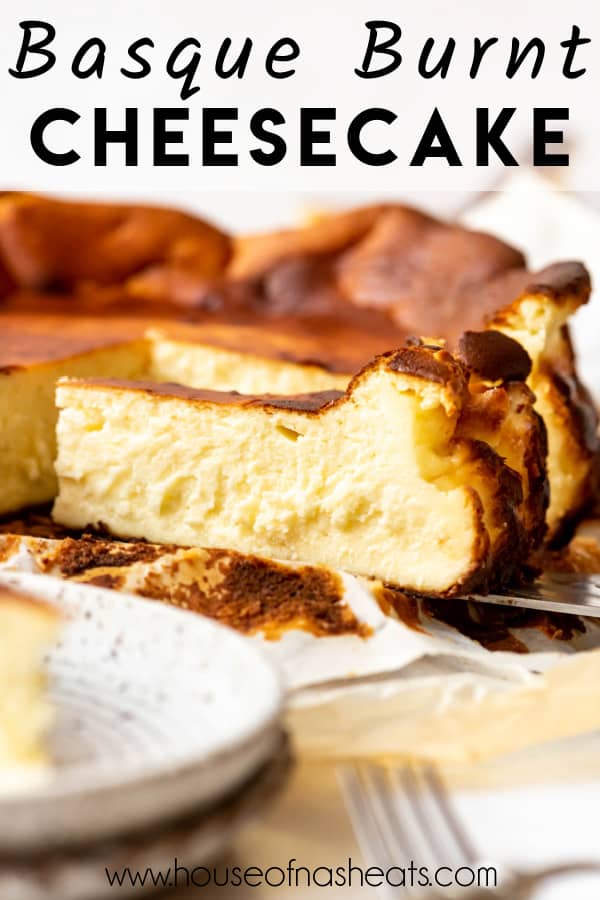
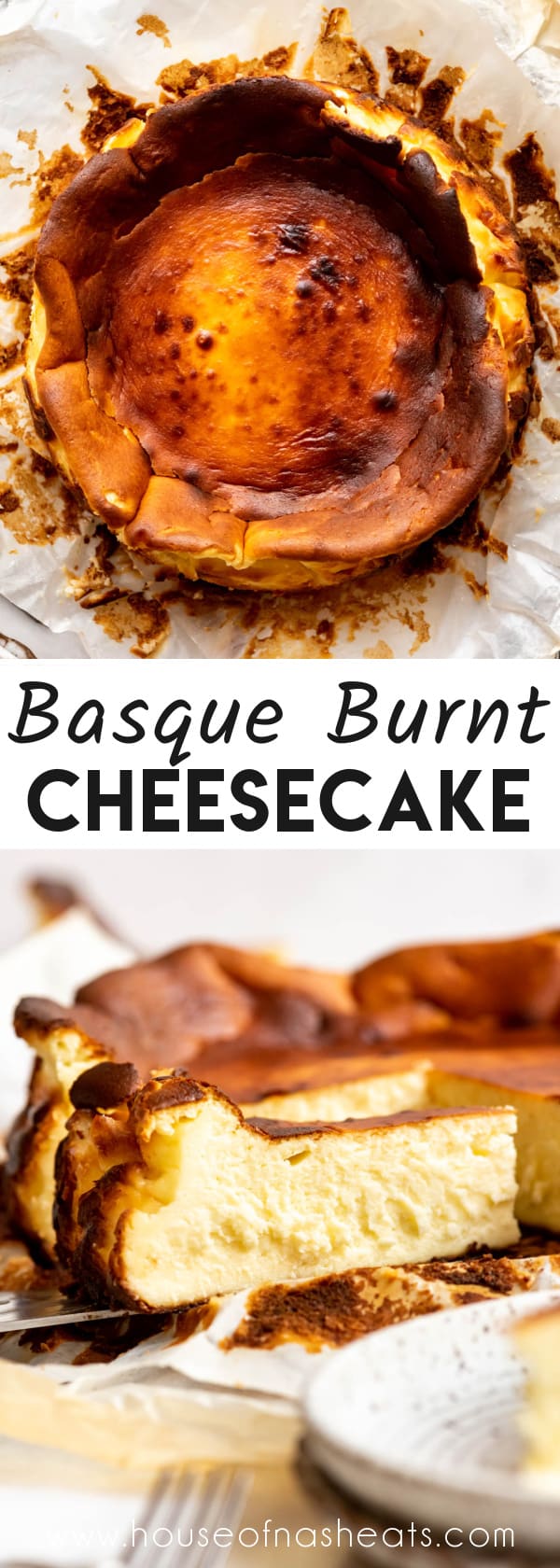
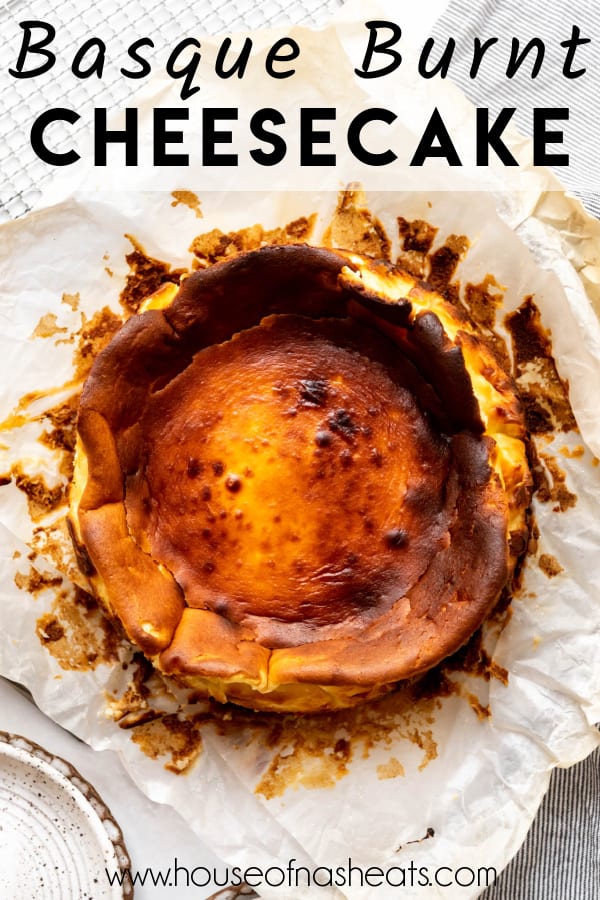
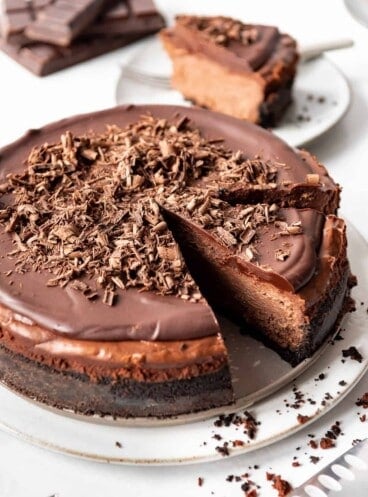
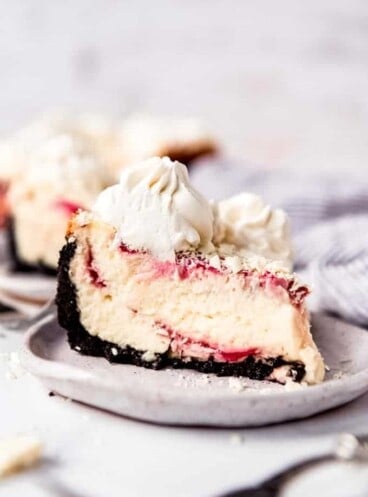
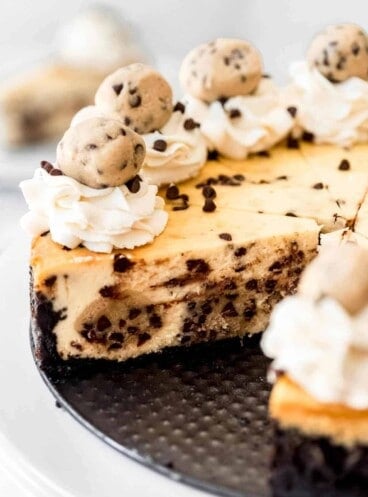
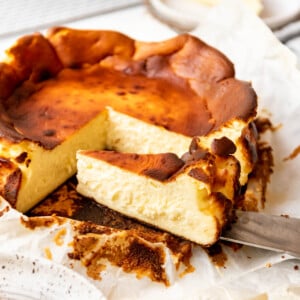



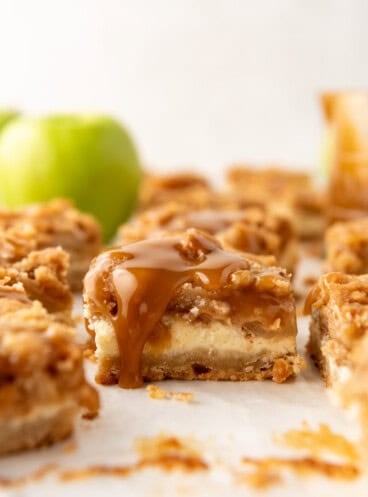

I’m going to make this for my son’s birthday
I would love to know how it goes for you!
ALL MARSCARPONE??I HAVE TRIED 3 CREAM CHEESE AND 1 CARSCARPONE AND LOVED IT.